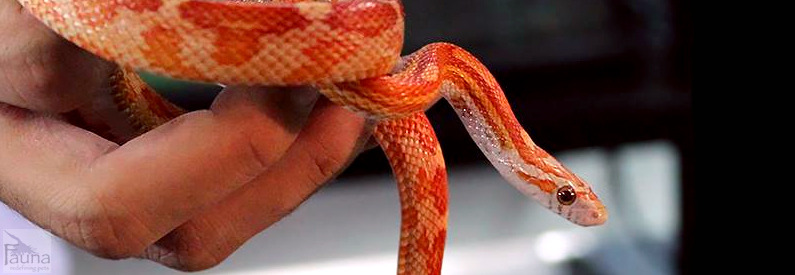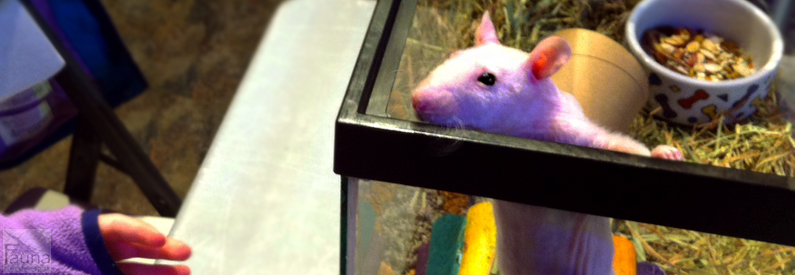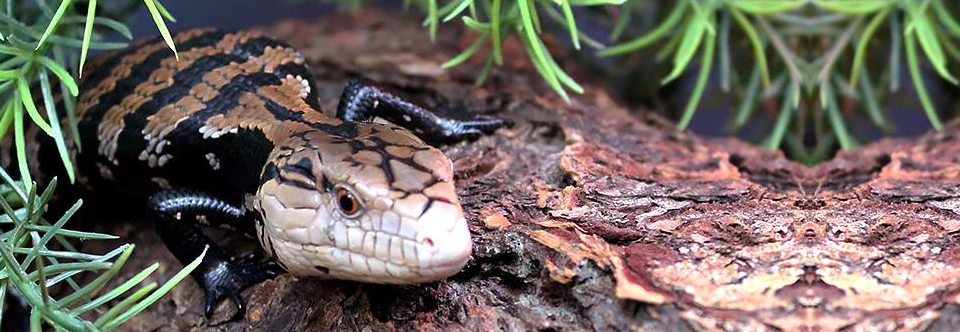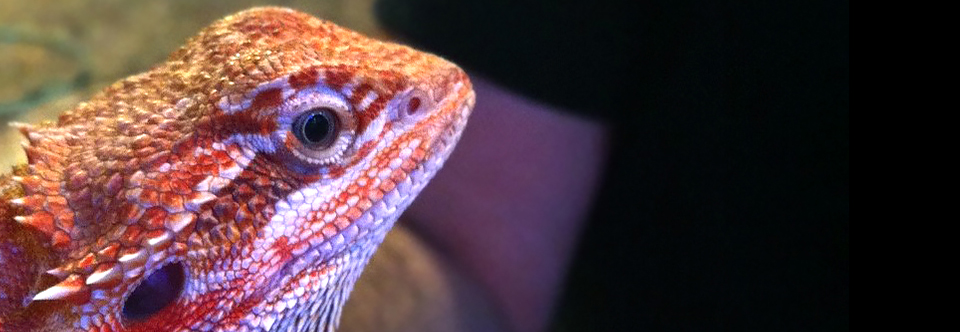
by Fauna | Mar 4, 2014 | Herpetology Club, Programs
February’s Herpetology Club met to learn about and compare the feeding behaviors of several of the reptiles housed at Fauna. The reptiles we focused on were Bearded Dragons, Crested Geckos, and Corn Snakes. Our students were taught well-known terminology such ‘omnivorous’, herbivorous, and ‘carnivorous’, as well as lesser known feeding classifications such as ‘frugivore’, ‘insectivore’, and ‘nectivore’; animals that specialize in eating fruit, insects and nectar respectively. Our club members were also taught that while these terms are a convenient way to group animals according to what they eat, very few of them strictly adhere to their label. For instance, Crested Geckos are both frugivores and insectivores, accepting both fruit and insects. We went on to examine the following: The different commercially available food items for reptiles. This included powdered forms of Crested Gecko food, canned invertebrates such as grasshoppers and snails, freeze-dried crickets, and pelleted tortoise food. The salad mix that is prepared and fed to the plant eating reptiles at the shop such as the Bearded Dragons. The various vitamin and mineral supplements necessary to round out the animals’ diets. To finish off our lesson, the children helped prepare food for Crested Geckos and also observed a corn snake feeding. Our club members learned the importance of feeding snakes outside of the enclosures they occupy, as well as the importance of feeding pre-killed food items as opposed to living. A live rodent will not simply let itself become a meal. Feeding pre-killed rodents lessens the likelihood of injury to the animal you are feeding. Mice, rats, gerbils, and other rodents...

by Fauna | Dec 10, 2013 | Herpetology Club, Programs
For this month’s club meeting, we decided to briefly shift our focus from reptiles and amphibians, and expose our students to some other animals. This month we will spend time learning about Patsy, a special breed of rat known as a Cornish Rex. Often misunderstood, we wanted to teach our students how intelligent, gregarious and sensitive these animals are, and provide some insight regarding their behavior and their role as a pest species. We also learned basic rodent care by cleaning Patsy’s enclosure, preparing her meal for the day, and putting together small enrichment toys to keep her busy and happy. Being extremely intelligent, pet rats require not only the company of other rats and their human companions, but also a fair amount of environmental enrichment. This can include items to climb, boxes to nest in, and toys to chew. Portions of their food can be offered in small cardboard boxes or paper bags so that the animals have to work to find and access their food. Owning a pet rat can be a very rewarding experience, but it can also bit a bit of work. Our club members experienced what it was like to interact with rats, and found a great appreciation for these amazing animals. Jose Rodriguez is Fauna’s Eco-Education Coordinator and he runs various programming aimed at different age levels. If you are interested in any of our outreach programs such as Classroom Visits, Birthday Parties or our Herpetology Club, please contact our director of education, Jose at: jose@faunanyc.com . To learn more about Fauna NYC, visit our...

by Fauna | Oct 11, 2013 | Blog, Herpetology Club
Fauna’s Herpetology Club gathered, once again, for its second meeting of the school year. After reviewing a few things from last month’s lesson on the difference between reptiles and amphibians, we moved on to a brand new topic; the four living orders of reptiles. We learned that scientists classify reptiles according to the structure of their skulls, comparing special openings known as temporal openings. We are also able to differentiate between the various orders by way of their physical traits. Once we got a good handle on the four orders of reptiles, we moved on to the differences between reptiles and snakes, the two members of the Order Squamata. While there are differences between snakes and lizards, both are distinguished from the other orders of reptiles by way of specialized jawbones. The quadrate bones, as they are known, are very mobile allowing the upper jaw to move independently of the skull. This gives squamates the ability to ingest larger prey. However, the two are fairly distinct. Amongst the many differences, snakes lack the limbs, traditional eyelids, and ear holes that lizards possess. We utilized our resident Desert King Snake and Blue-tongued Skink to observe these differences, as well as learn proper techniques for handling a constricting snake and a large, elongate lizard. Written by Jose Rodriguez, Fauna’s Eco-Education Coordinator. Jose runs various programming aimed at different age levels. . To learn more about Fauna NYC, visit our website! Sign up for our eNewsletter for new animal arrivals, product discounts, and upcoming...

by Fauna | Sep 18, 2013 | Events, Herpetology Club
September means back to school, and it also means we welcome back members of Fauna’s Herpetology Club! Our first meeting served as an introduction to the science of herpetology as we learned the key distinguishing characteristics of reptiles and amphibians, as well as the differences between the two. We then had an extensive hands-on session in our Reptile Room, as we met all the new reptiles at the shop. We had a chance to compare the different textures of the reptiles’ scales, and learned about key differences between lizards and snakes. Our meeting ended with a behind-the-scenes tour of the shop where we got to see where the animals’ meals are prepared and where our breeding reptiles are kept. Written by Jose Rodriguez, Fauna’s Eco-Education Coordinator. Jose runs various programming aimed at different age levels. . To learn more about Fauna NYC, visit our website! Sign up for our eNewsletter for new animal arrivals, product discounts, and upcoming...





